Isn’t it strange how the simplest things can be the most intimidating?
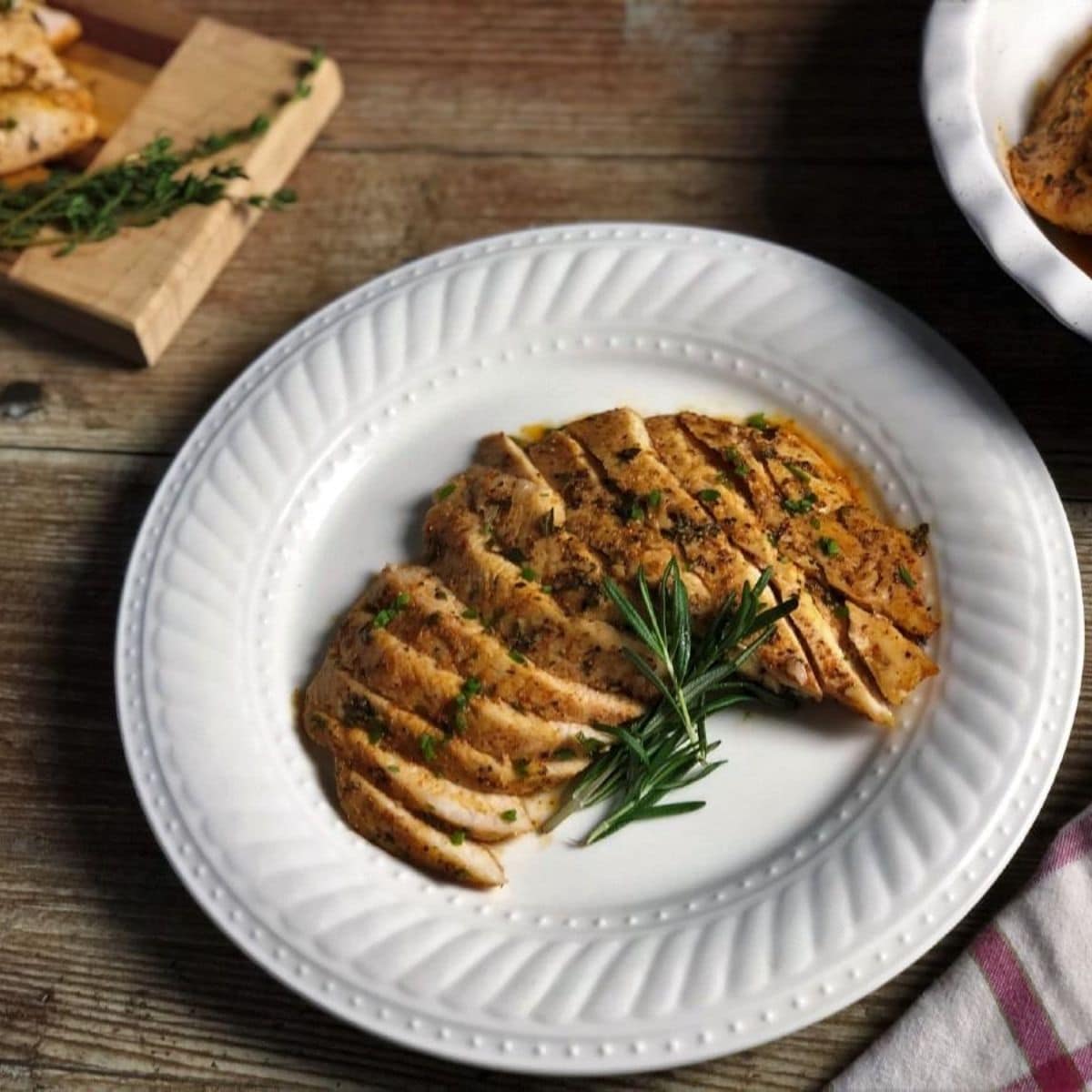 Case and point:
Case and point:
I’m a published cookbook author who appears as a professional food personality on national television. Yet when it comes to making hard-boiled eggs—I call my dad for help.
Every. Single Time.

Don’t worry, when it comes to chicken breasts, I’ve got you covered. That’s what we’re here for. The point is that despite this protein being so straightforward, it consistently lands at the top of people’s lists of “things I don’t like to cook.”
Chicken breasts have a bad rap.
They’re notorious for being bland, dry, overcooked, and boring. But why is that? Well, for starters: they’re a lean protein.
They contain almost no fat, and in the culinary world, everyone knows that fat equals flavor. Chicken is also one of the proteins that’s most often cooked wrong. Those afraid to undercook it will heat it until it resembles shoe leather. Those who think that salmonella is a ray-
finned fish, well, they probably know how this story ends.
So here they are:
My life-changing secrets for flawlessly cooked, fearlessly flavorful baked chicken breasts.
If you’re questioning my status as a chicken expert, I don’t blame you. We just met. That being said, I’m happy to give you a brief background on my familiarity with the subject at hand.
Close your eyes. Time travel can get bumpy.
I’m sixteen and have just pulled into my parents’ leafy, circular driveway after a leisurely afternoon hangout with friends. I walk through the mahogany-glazed front door and am instantaneously struck with the warm scent of nutty roasted garlic and woody rosemary that’s been smeared over a whole roast chicken.
For me, this is the quintessence of home.
In the land of cosmically marvelous chicken, my dad is the mayor, the president, and the duke of dark meat. In what felt like the blink of an eye, he would transform a gangly whole fowl into an elegant meal of golden chicken pieces surrounded by caramelized carrots and succulent gravy.
I studied his every move as he would toss a kitchen towel over his left shoulder, drain the viognier from his glass, and scatter finely chopped herbs over our finished plates. It was like watching Walt Whitman effortlessly scribble poetry onto a bar napkin.

Though I was a straight D student in a traditional school, I was an overachiever in this home-taught chicken course. My dad’s go-to poultry method was baking. On a typical night, he would gently brush the chicken’s pink skin with fruity olive oil and sharp, pungent crushed garlic.
A parade of paprika and then into the oven the bird would go. These mouthwatering memories, no doubt, led to my current day love affair with chicken.
The first time I was faced with the solo act of cooking it, I thought back to those delicious moments just before my dad would slice into the meaty breasts. I suddenly wondered: how did he know they were done?
I never once saw him use a kitchen thermometer. Well, as it turns out—after decades of practice, he was proficient in poultry and just knew “by the touch” that it was time.

Although I, too, proudly carry this skill, I still strongly support and encourage taking the chicken’s temperature.
On that note—never forget the phenomenon of “carryover cooking.”
Once meat is removed from its source of heat, its temperature continues to rise—making even more of an argument for using a thermometer. You’ll know exactly when the chicken is 95% done cooking (about 155 – 160° F) and that, my friends, is the exact time it’s ready to come out.
But wait, we started at the end. Let’s take a few steps back.
First, the brine. In just a flash of fifteen minutes, and with nothing more to it than water, salt, and a large bowl—you can add tenderness and juicy texture to typically bland breasts.
For my next trick: fat!
Adding heart-healthy olive oil to chicken breasts trims the calories and I’m cool with that. However, I’m an advocate for brushing with butter. My teeth—and my chicken.
The fragrant garlic, grassy herbs, and savory spices this recipe calls for add profuse flavor, but the butter adds a richness that can’t be replicated.
Got it? The 3 B’s. Brine. Butter. Better check that temp.
I use these techniques not only for crafting a beautifully browned, expertly moist morsel of lean protein, but also to fill my present kitchen with the comforting smells of past chicken celebrations.
I invite you to do the same.
📖 Recipe
Garlic and Herb Baked Chicken Breast Recipe
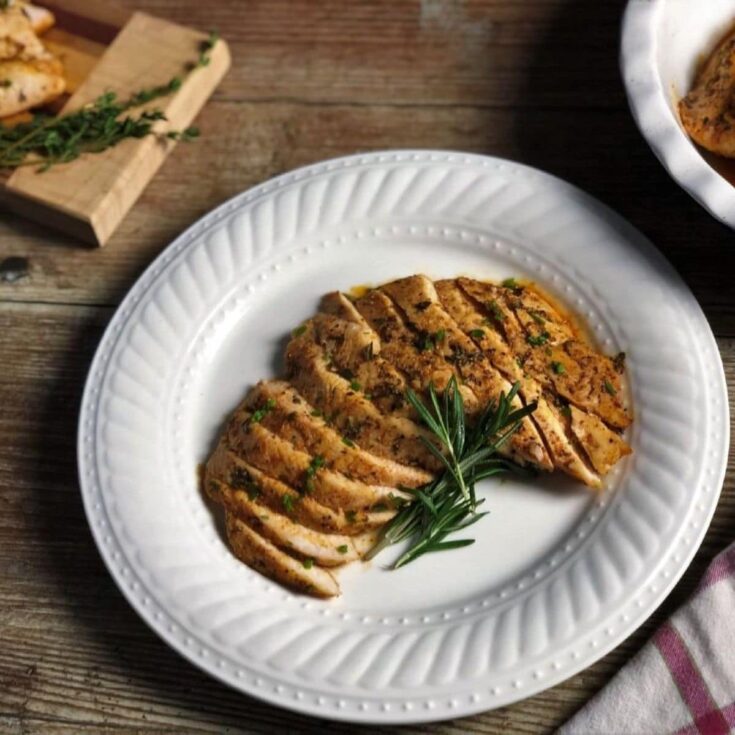
For rich, buttery chicken breasts that are anything but bland, follow the secrets of this simple recipe. Brine, bathe in buttery garlic herb blend, bake, and rest. The result? Tender, impeccably cooked chicken that you’ll want to make again and again. Read on to add this recipe to your collection of chicken victories.
Ingredients
- ¼ cup coarse salt (plus 2 teaspoons)
- 4 boneless skinless chicken breasts
- 2 tablespoons olive oil
- 2 tablespoons dry white wine
- 1 ½ teaspoon freshly ground black pepper
- 1 teaspoon garlic powder
- 1 teaspoon paprika
- 2 tablespoons unsalted butter, melted
- 2 large cloves garlic, grated
- 1 tablespoon chopped fresh thyme
- 1 tablespoon chopped fresh rosemary
- 2 tablespoons chopped chives, divided
Instructions
- Fill a large bowl with 1 quart of warm water and whisk in the ¼ cup of the salt. Add the chicken breasts and allow them to brine in the mixture for at least 15 minutes at room temperature, or 6 hours in the fridge.
- Remove the chicken from the brine, rinse with cold water, and pat dry with paper towels.
- Preheat the oven to 400° F.
- Grease a baking dish with 1 tablespoon of the olive oil and then arrange the chicken breasts in a single layer. Drizzle the chicken with the white wine and then season on both sides with the remaining 2 teaspoons salt, the pepper, garlic powder, and paprika.
- In a small bowl, whisk together the butter, garlic, thyme, rosemary, and 1 tablespoon of the chives.
- Brush the chicken on both sides with the garlic-butter-herb mixture, and then drizzle with the remaining 1 tablespoon olive oil.
- Bake until the chicken is fully cooked through and the internal temperature of the thickest part reads 160°F, about 20-25 minutes (depending on the overall thickness of the breasts).
- Remove the pan from the oven, place the chicken (and all its juices) onto a plate, and tent with aluminum foil. Allow the chicken to rest for 5 minutes, and then slice it against the grain, drizzle with the juices from the plate, and garnish with the remaining chives.
Nutrition Information:
Yield:
4Serving Size:
1Amount Per Serving: Calories: 325Total Fat: 17gSaturated Fat: 6gTrans Fat: 0gUnsaturated Fat: 10gCholesterol: 117mgSodium: 7165mgCarbohydrates: 2gFiber: 1gSugar: 0gProtein: 38g
Chef’s Tips
- Another tremendous tenderizer for chicken is plain Greek yogurt. Slather it on thick along with lemon, garlic, and fresh dill and throw it on the grill the next day for out-of-this world homemade gyros.
- If a crispy, golden-brown exterior is what you’re after, sear the chicken in a cast-iron first and then finish it in the oven.
- Size matters. Trying to cook a colossal chicken breast can be complicated as some parts are thicker than others. If you don’t feel up to pounding the breasts into one, flat even-size piece—butterfly them (keep your hand flat on the breast, slice down the middle with your knife
blade parallel to the cutting board) to produce two smaller cutlets.
Step by Step Instructions With Photos:
Step 1 – Brine the Chicken
Fill a large bowl with 1 quart of warm water and whisk in the ¼ cup of the salt. Add the chicken breasts and allow them to brine in the mixture for at least 15 minutes at room temperature, or 6 hours in the fridge.
Remove the chicken from the brine, rinse with cold water, and pat dry with paper towels.
Step 2 – Season the Chicken and Make the Garlic-Butter-Herb Mixture
Preheat the oven to 400° F.
Grease a baking dish with 1 tablespoon of the olive oil and then arrange the chicken breasts in a single layer. Drizzle the chicken with the white wine and then season on both sides with the remaining 2 teaspoons salt, the pepper, garlic powder, and paprika.
Melt the butter, grate the garlic, and chop the thyme, rosemary, and chives.
In a small bowl, whisk together the butter, garlic, thyme, rosemary, and 1 tablespoon of the chives.
Step 3 – Brush the Chicken with the Butter Mixture and Bake
Brush the chicken on both sides with the garlic-butter-herb mixture, and then drizzle with the remaining 1 tablespoon olive oil.
Bake until the chicken is fully cooked through and the internal temperature of the thickest part reads 160°F, about 20-25 minutes (depending on the overall thickness of the breasts).
Step 4 – Rest the Chicken, Slice, Garnish, and Serve
Remove the pan from the oven, place the chicken (and all its juices) onto a plate, and tent with aluminum foil. Allowing the chicken to rest keeps all of the juices inside so they don’t come out when you slice it.
Allow the chicken to rest for 5 minutes, and then slice it against the grain, drizzle with the juices from the plate, and garnish with the remaining chives.

Why Did the Chicken Cross the Rosemary?
Because he was running out of thyme.
Now that you’re armed with the three B’s, you’re ready to take any and all breasts into your very own hands. That sounded weird, but you know what I meant.
The capacity for how to enjoy this perfectly baked chicken is endlessly customizable. Slice it over salads, toss it with buffalo sauce with spicy quesadillas, or snack on it over the sink while no one’s looking.
Yep. It’s that good.

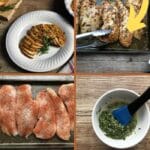



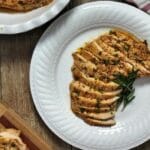
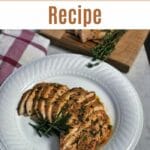

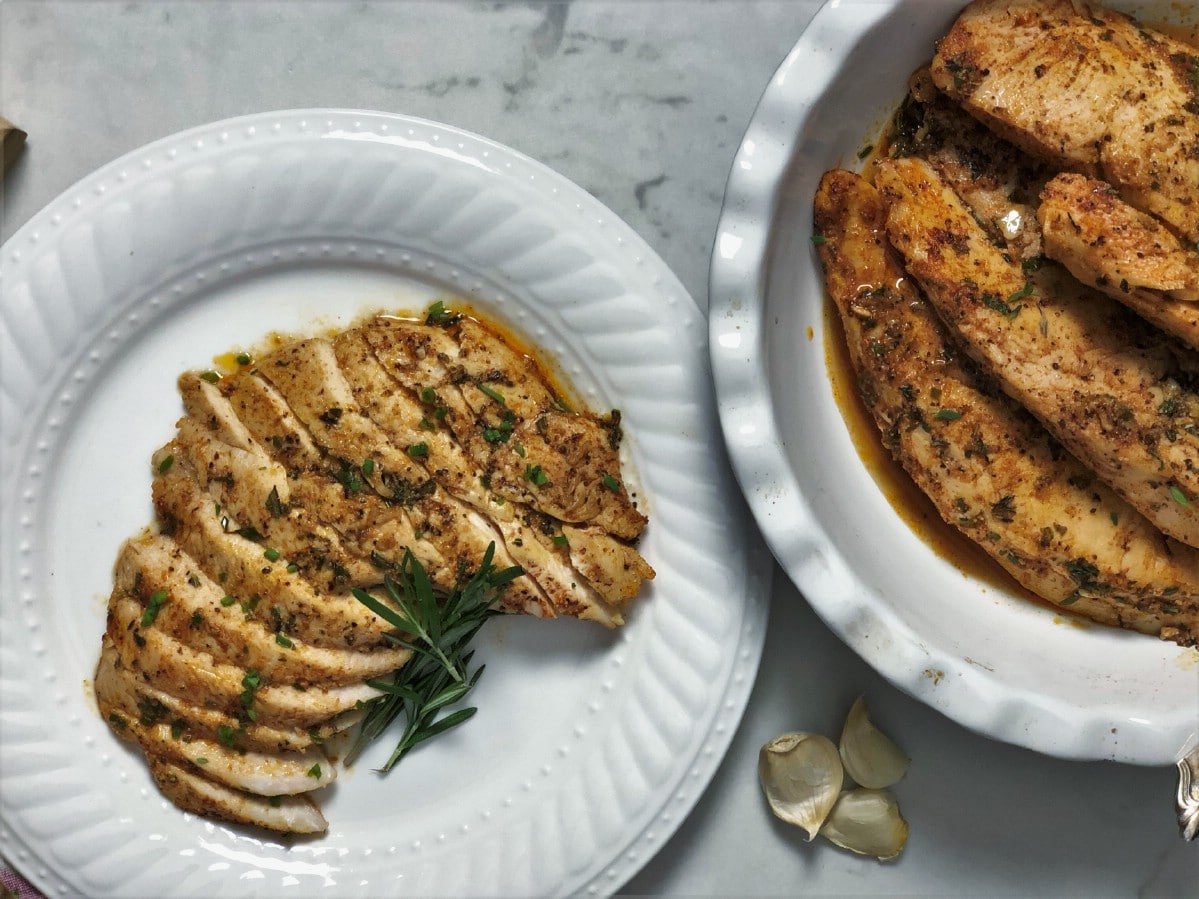
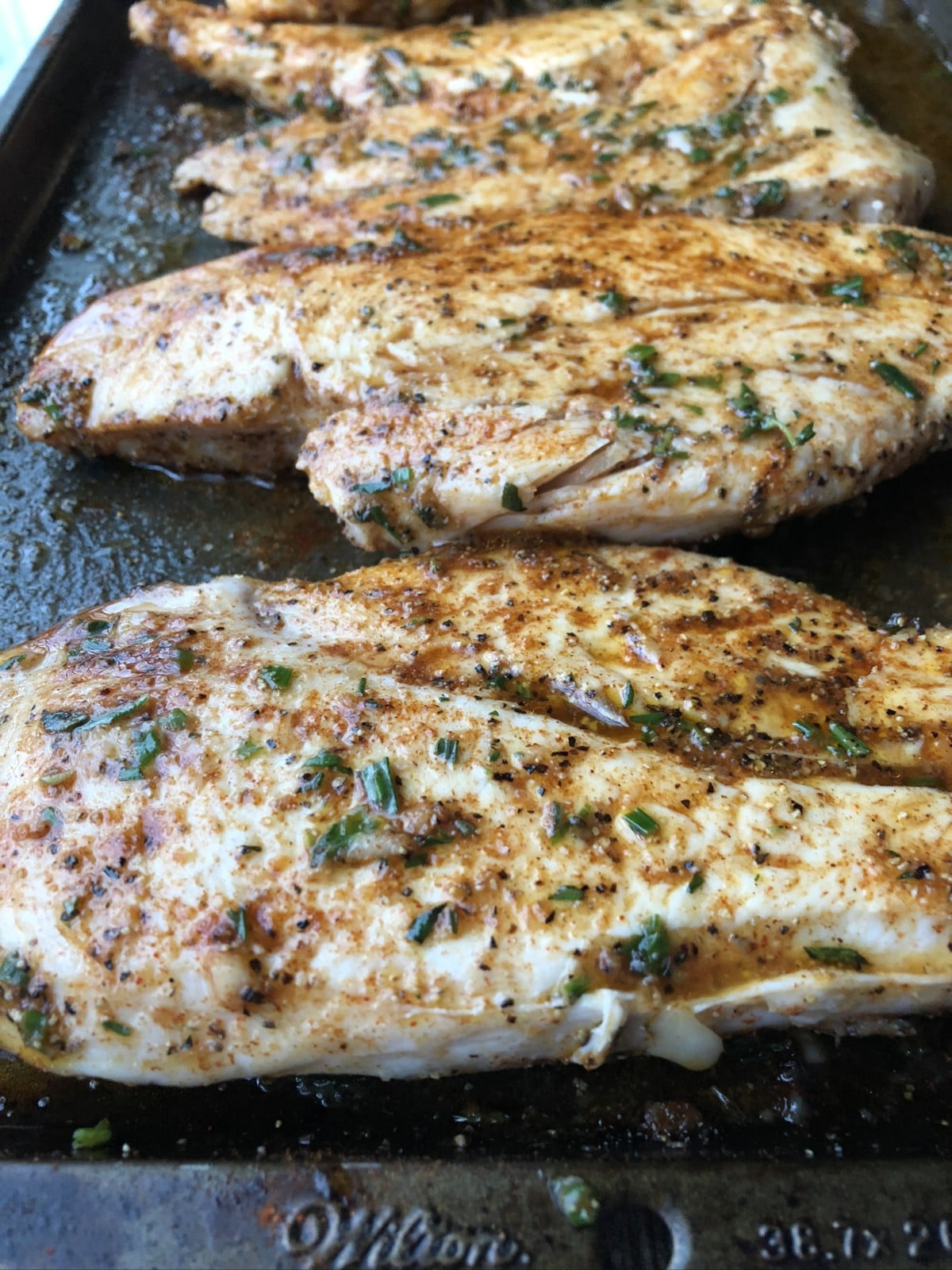
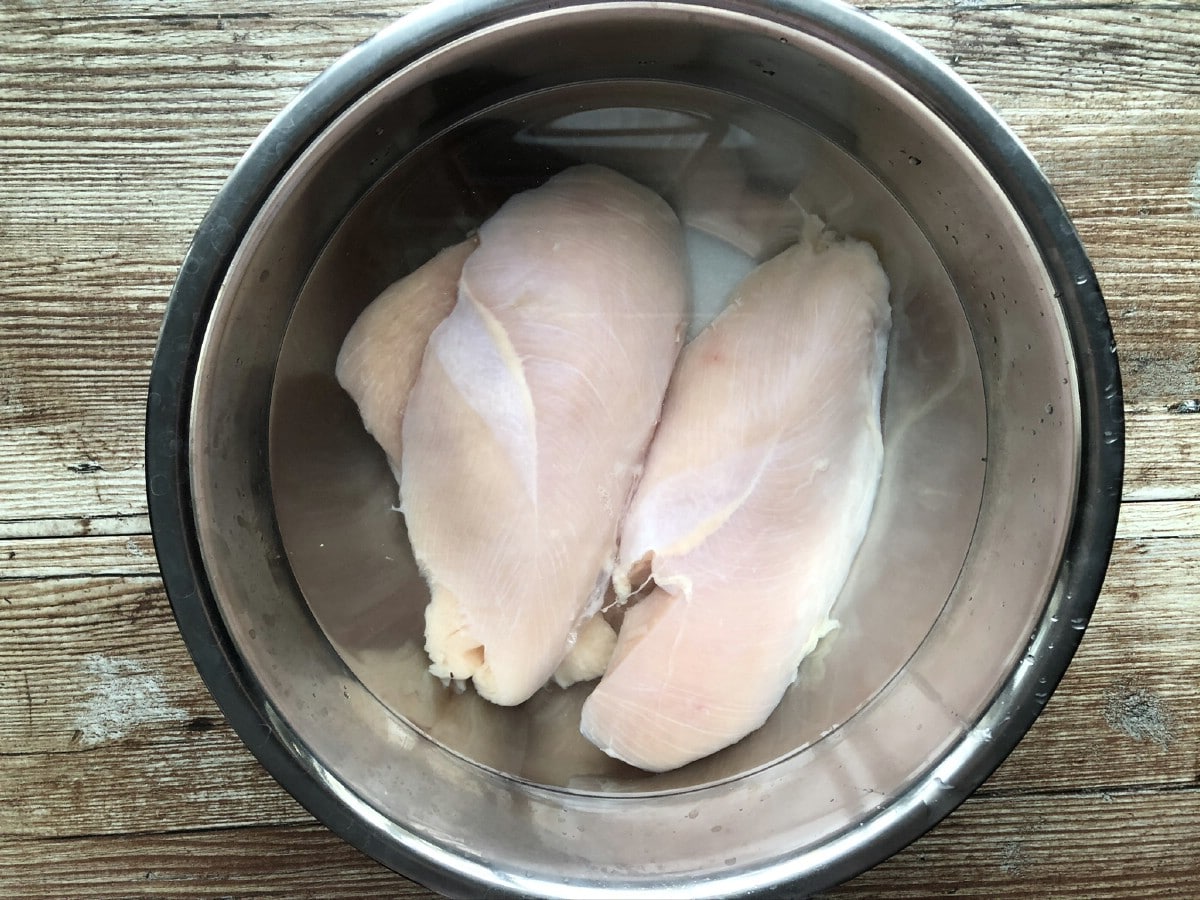

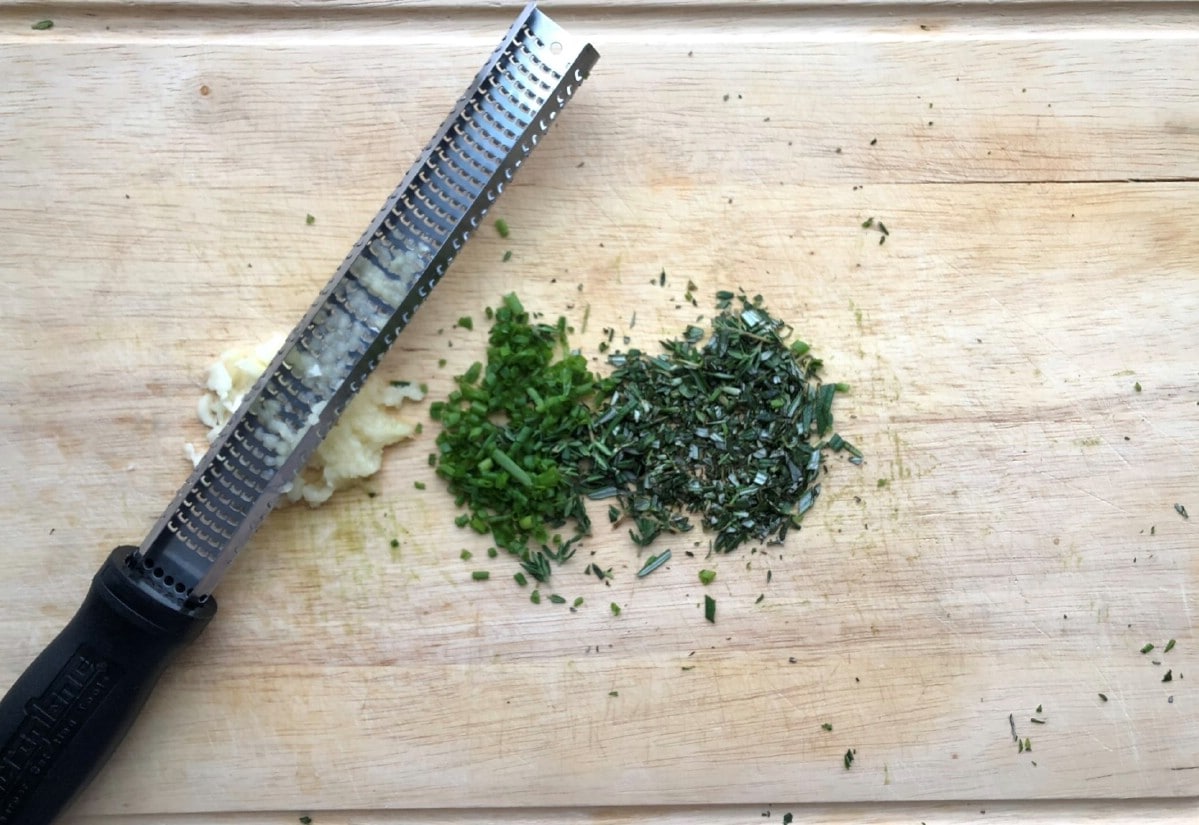







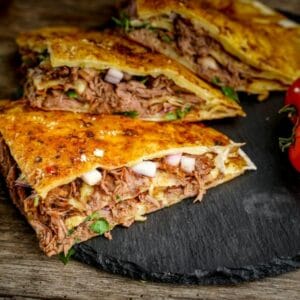
Foze
Thank you .. would love more recipes